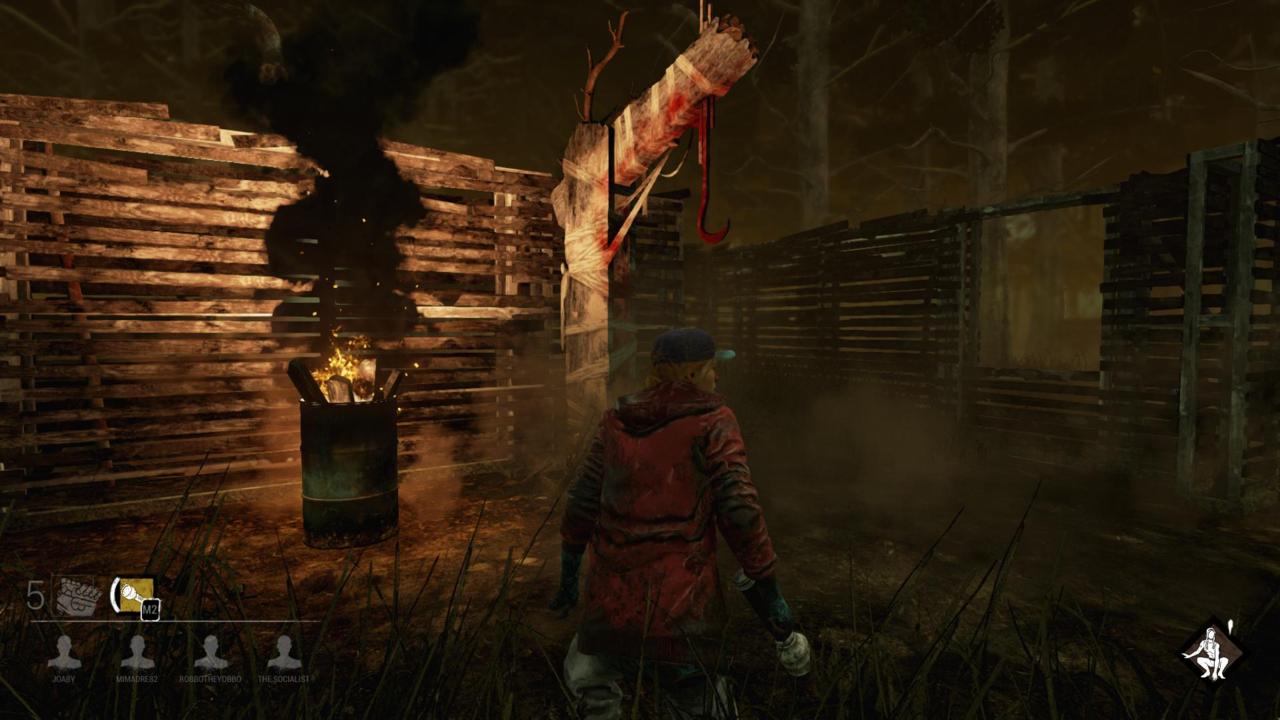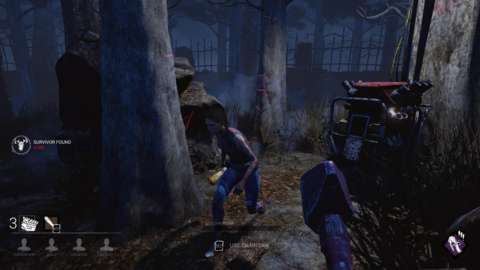Horror in games (and films) is too often characterised by jump scares; shocking, startling events designed to trigger a fight-or-flight response. Dead by Daylight, to its credit, eschews these in favour of real horror--a gradual increase in tension resulting from the unshakeable sense of impending doom. That it manages to do this in an asymmetrical competitive action game is what is truly impressive about it.
Dead by Daylight features two teams--four survivors and one killer--and pits them against one another in a battle for all the marbles: The four survivors need to repair five generators to power the gates which will allow them to escape. The killer needs to find the survivors, knock them down, put them on hooks and then sacrifice them to their otherworldly gods. The odds are skewed heavily in favour of the invincible killer, and as a result playing Dead by Daylight as a survivor can be a nerve-rattling, sweat-inducing, terrifying experience.

After queuing into a game with three other survivors, Dead by Daylight puts you in one of several eerie horror environments--a dilapidated farm, a run-down manor, a rickety junkyard--and tells you, very simply, to fix the generators to escape. When you find the generators, you then need to repair them--a painstakingly slow process, where you hold the left mouse button down while crouching in front of it. If you're alone, repairing the generator can take more than a minute. As you crouch next to the very noisy generator, the game will throw skill-tests at you by way of a rotating bar--if you fail the QTE, the generator will backfire. This creates a noisy explosion, and the killer is visually alerted to the location of the backfire, turning you into a target.
If the killer does find you (and he probably will) your options are limited. If you have a flashlight you can blind him temporarily, but your best bet is to run away. The killer moves faster than you can run, maintaining the traditional horror movie 'ominous walk', but you can slow him down by leaping through windows, or pushing down pallets to block his path. You want to put as many of these obstacles in between the two of you as possible as you flee for your life.

Fortunately for the survivors, a sixth sense mechanic alerts them to the presence of a nearby killer--the closer the killer is, the faster your survivor's heart beats. Unfortunately the sound is obscured by generator revving as you repair it. When 90% repaired, the generator nearly drowns out the heartbeat entirely, forcing you to rely solely on your eyes to see the killer.
When you play as the killer, you're able to see all the map's generators at all times, allowing you to patrol them. If any of them are making noise, you know at least one survivor has been working on it, and you can hunt for signs that the others are nearby. Panicked survivors will sprint away, leaving scratches on nearby walls and breaks in the grass, and you can follow these markings to find your prey. Once you find your prey you chop them down, pick them up and put them on a hook, sacrificing them to your god after 60 seconds.
The scoring system initially encourages players to create exciting gameplay opportunities by rewarding risky play. Survivors who engage in lengthy, drawn out chases escaping the killer will earn more points for their boldness, and you can rack up the points by rescuing other survivors who have been captured but not yet sacrificed. As a killer you're rewarded for killing more of the survivors, although a single sacrifice is counted as a victory. Inevitably though, this scoring system leads to immersion-breaking actions like exploiting the killer's slow movement past obstacles, as survivors earn huge points by taunting their hunter.

Another problem for Dead by Daylight is its matchmaking system. The game is entirely peer-to-peer hosted, with the killer hosting the survivors at all times. Unfortunately there's no way to tell where in the world the killer is or whether they're capable of hosting five people in a game until you're playing. There's no ping indicator and no regional matchmaking, so you have to roll the dice each time you join a new server--and if you crap out, you'll warp around the game world barely able to work out what's going on. Further, there's no group-based matchmaking, so you can't queue with friends. This results in players lobby-hopping until they are grouped with friends, which is a terrible experience for all involved.
Dead by Daylight executes the concept of a competitive horror game well, but only to a point. As players become more familiar with both roles, the horror dissipates and they begin to play for the competitive element alone. The poor matchmaking and the highly exploitable scoring system make Dead by Daylight less competitive than it should be, resulting in gameplay which doesn't resemble the horror experience it sets out to be.